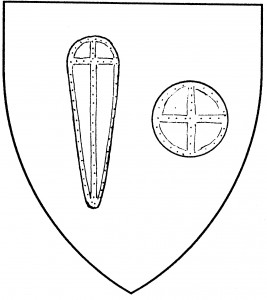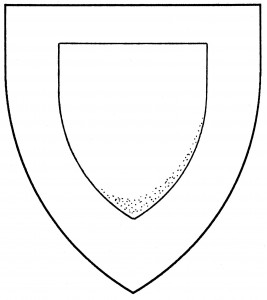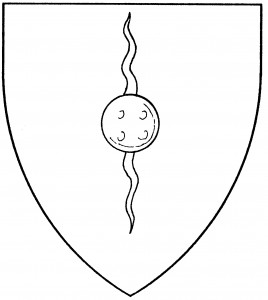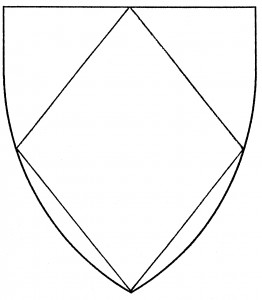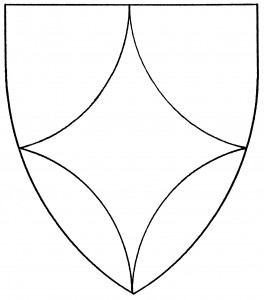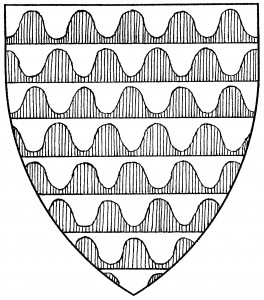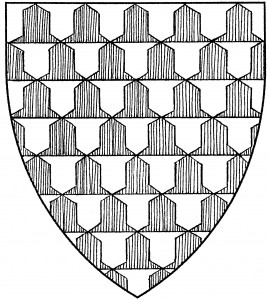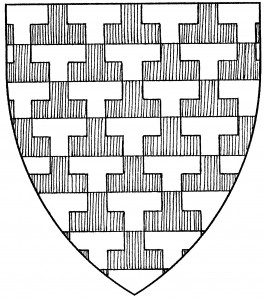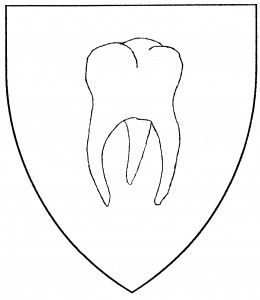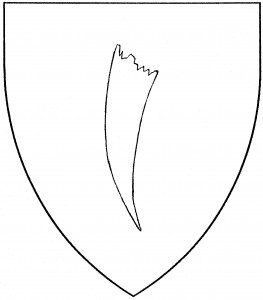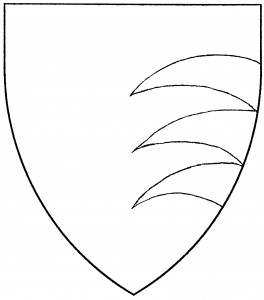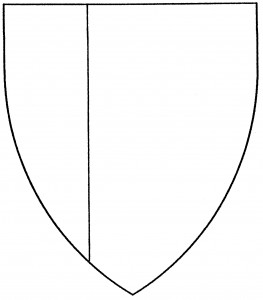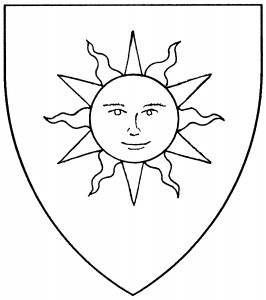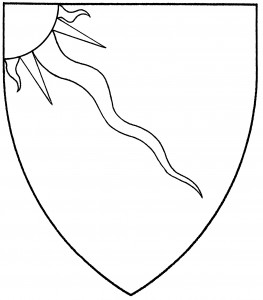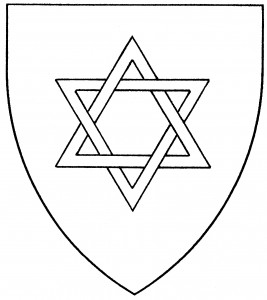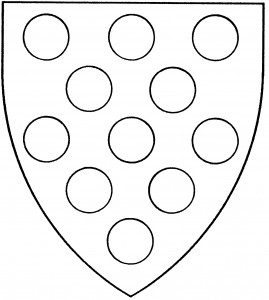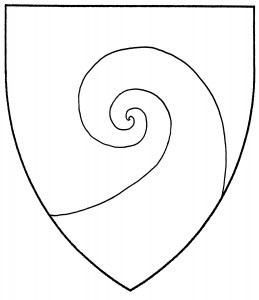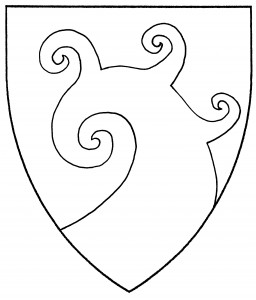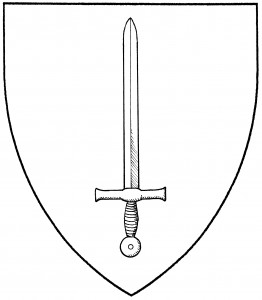
Sword, or broadsword (Period)
A sword is a hand weapon with a long pointed blade, which may be single or double-edged, set in a hilt. It was the primary hand weapon of the Middle Ages; as an heraldic charge it dates from c.1275, in the canting arms of Marmion [ANA2 550]. The default orientation is palewise, point to chief; if the sword is single-edged, the edge is to dexter by default. When blazoned “proper”, the sword has an argent blade and Or quillons and hilt.
There are a great many variant forms of sword, depending on the shape of the blade; many strange forms are blazoned simply as a “sword”. No difference is therefore counted between the variants. The most common form is the “broadsword” or “arming sword”: straight-bladed, double-edged, straight-quilloned. Any sword whose form is unspecified may be safely drawn in this form.
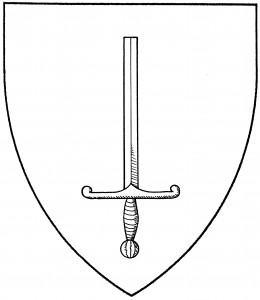
Sword curtana (Period)
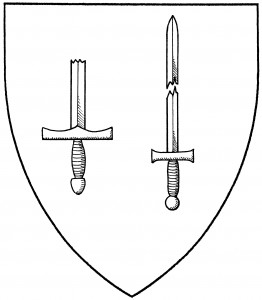
Broken sword (Period); sword fracted (Period)
The sword’s blade may be altered in some manner. The oldest such alteration is the “curtana”, or more fully, the “sword curtana”: a sword with its point blunted. The curtana, though not a charge on shields, was part of the English coronation ceremony, where it is also known as the Sword of Mercy. It was certainly in use temp. Richard III, 1483 [OED], and is described by Archbishop Cranmer as used in Edward VI’s coronation, 1547 [Pemberton, The Coronation Service, 1901, p.23].
A more severe alteration is the “broken sword”, with the blade snapped away halfway down its length [Franklyn 321]; it’s found in the crest of Ryvet or Rivett, c.1528 [Woodcock & Robinson pl.13]. This should not be confused with the “sword fracted”, which is a complete sword separated into two fragments, as seen in the arms of Kemp of Thomastoun, 1582 [Dunvegan Armorial, fo.429].
Of swords peculiar to the Society, there are the “sword of Damocles”, a broadsword hanging, point down, from a thread tied to the hilt; and the “sword of Hoflichskeit”, an obsolete Society term for a mullet of four points elongated to base, gyronny Or and sable.
The Society’s other sword variants may be classed according to blade shape: straight-bladed or curved-bladed. The Society permits many variants which, while found as artifacts or weapons in period, were not period heraldic charges.
The straight-bladed swords found in period heraldry (in addition to the standard broadsword) include:
The curved-bladed swords found in period heraldry include:
The straight-bladed swords found as artifacts in period include:
The curved-bladed swords found as artifacts in period include:
Swords which are disallowed in the Society include:
- The saber (modern cavalry saber)
For related charges, see knife, zulfikar. See also scabbard.
The Marshallate bears: Sable, two swords in saltire Or.
Peter of Stratford bears: Or, chapé checky argent and sable, a sword sable.
Donnabhán O Rothláin bears: Vert, three pairs of swords in saltire Or.
El of the Two Knives bears: Sable, two swords Curtana inverted and conjoined at the quillons within a bordure Or.
Ivan Piotrovic Pevcov bears: Per fess indented argent and gules, a broken sword bendwise proper.
Lothar of Rothenborg bears: Or, a sword fracted sable hilted gules, between two flaunches azure.
Roger von Allenstein bears: Gules, on a pile sable fimbriated argent the sword of Damocles pendant Or.
